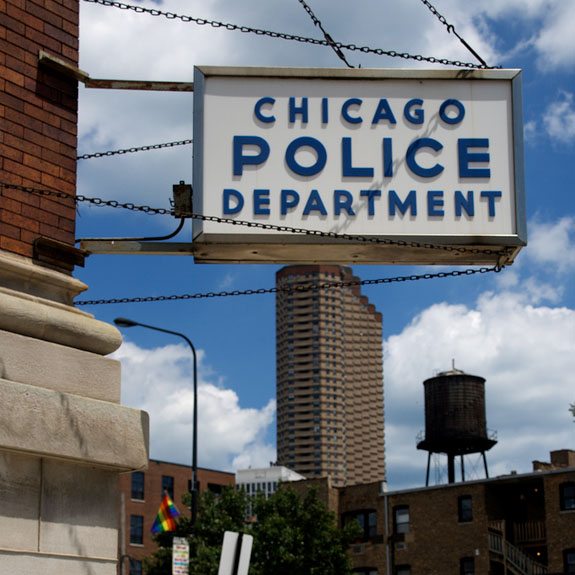
June 8, 2017; Chicago Reporter
For more than five years, Chicago has paid millions in police misconduct settlements and their litigation costs. This year, the city is banking on a three-pronged strategy—aggressive recruitment and training, a hopefully more openly negotiated union contract, and the implementation of the reforms suggested by a U.S. Department of Justice report—to provide light at the end of this tunnel.
The litany of infractions outlined in the study have a few things in common. They take place in African American and Latino neighborhoods, with two thirds in majority-black census tracts. Three-quarters alleged excessive force, false arrest, or both and a quarter claimed that two or more officers conspired to violate a person’s rights. “In an additional 31 cases, officers allegedly drew their guns and pointed them at people, including, in some cases, children.”
In an effort to catalog and provide “transparency” surrounding the city’s police civil suit obligations, the Chicago Reporter’s publication/database, Settling for Misconduct, updated as required, serves as a stunning compilation: the cost, police participation, level of misconduct, crime location, and the misconduct payment aftermath.
The city paid more than $12 million last year for 14 police shootings, seven of them fatal.
The money is staggering. Accordion to the report and other articles, “Chicago spent more than $280 million on misconduct lawsuits from 2011 to 2016, plus another $91 million for outside lawyers to help defend police officers in those suits.” Adding insult to injury, according to the same article, the city routinely underbudgets for payments, leaving the city council scrambling for loans with high interest rates from Chicagoland bankers. Unfortunately, Chicago is not alone. Increasing civil suits brought by victims and their survivors are becoming a tragic norm in major urban centers. But the mayor has a plan.
Sign up for our free newsletters
Subscribe to NPQ's newsletters to have our top stories delivered directly to your inbox.
By signing up, you agree to our privacy policy and terms of use, and to receive messages from NPQ and our partners.
On June 26th, Chicago’s Mayor Rahm Emmanuel and his police superintendent welcomed the most recent class of new police recruits. The recruits are part of a two-year effort to add one thousand officers to the force. This latest class is the sixth class this year. Many are military veterans, hail from Chicago communities, and are public school graduates. The goal is to gain recruits who are more vested in the city’s success.
Classes are smaller but onboard more often, and will be the first to take the city’s new curriculum based on newly developed use of force policies. The training focuses on policies and skills identified through citywide public comment and officer and supervisor focus groups on the use of force. According to the city’s website, “They provide clear direction for officers when the use of force is permitted and emphasize sanctity of life, de-escalation and accountability.” Cultural awareness is also a component.
New recruits are not the only focus. The department has new policies, and effective fall of 2017, every member of the force will have taken this first four-hour course. It is not clear if there are contingency plans for the square-peg officers who might not fit into the mayor’s new round holes. The goal is for the new Fraternal Order of Police contract, due to begin negotiations at the end of this month, to provide an opportunity for change.
The recent contentious union election, with one of the largest turnouts in recent history, resulted in a new president. The selection was not what the city had hoped for. The new police union leadership has pledged to support and protect officers from the perceived wave of anti-police media and protests. Many of the current contract provisions, which the new leadership has pledged to support, are standard in large city contracts. They include giving officers 24 hours to respond to a complaint, allowing officers to review evidence before responding to complaints, and disallowing anonymous complaints by forcing complainants to appear in person and sign an affidavit. These provisions have curtailed complaints in all but high-profile cases, but more importantly, they institutionalized components of the “thin blue line.” The corresponding strategy for activists has been to make as many complaints as possible high profile.
The Department of Justice recommendations echoed those outlined in the police department’s internal report, “Next Steps for Reform.” Most prominent was the need for risk analysis, which would include flagging frequently sued officers, and to identify ways to reduce or eliminate officer misconduct and the consequent litigation and payouts. The database will be useful in determining who should be encouraged to leave, be removed, or at the very least invited to enjoy early retirement. With what the city currently spends on litigation and settlements, there is a strong possibility that it would be more cost-effective to lose the kind of reoffending officers that ongoing risk analysis will identify.
Like-minded stakeholders are key allies in creating significant change. Chicago residents are dying and protesting in the streets. They have not always agreed with the mayor, but his quest to remove current archaic components of the contract should generate citywide support. The “Settling for Misconduct” data bolsters his argument. Money spent on defending and settling lawsuits would more than cover any proposed salary hikes, and removing the reoffenders would free up another source of revenue. Still, Emanuel must tread lightly and enlist the aid of his allies, as union bashing is never a good look for a Democrat.—Mary Frances Mitchner













